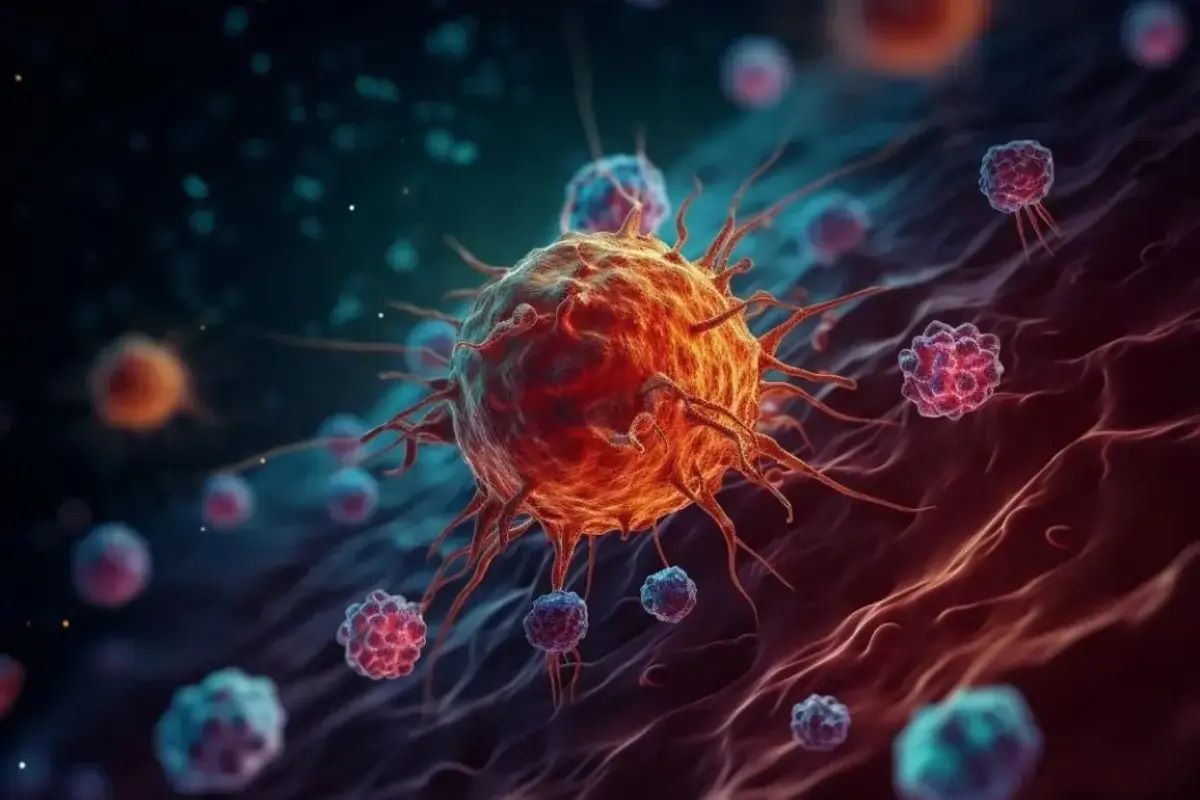
Heat transfer is a fascinating phenomenon that plays a fundamental role in our everyday lives. From cooking our meals to the functioning of electronic devices, heat transfer is an integral part of numerous processes and systems. Understanding the mechanisms and principles of heat transfer is crucial not only for scientists and engineers, but for anyone who wants to appreciate the world around them.
In this article, we will delve into the topic of heat transfer and explore 11 astounding facts that highlight the importance and incredible nature of this field. We will uncover the various modes of heat transfer, delve into the laws that govern it, and explore some mind-boggling real-life applications. So, get ready to be amazed as we take a deep dive into the captivating world of heat transfer!
Key Takeaways:
- Heat can be transferred in three ways: conduction, convection, and radiation. This affects everything from cooking to weather patterns and is crucial for maintaining a comfortable living environment.
- Metals are great at transferring heat, while insulators help reduce heat transfer. Understanding heat transfer is essential for cooking, industrial processes, and creating a cozy living space.
Heat can be transferred in three different ways
Heat can be transferred through conduction, convection, and radiation. Conduction involves the transfer of heat through direct contact between objects, while convection occurs when heat is transferred through a fluid medium like air or water. Radiation, on the other hand, involves the transfer of heat through electromagnetic waves.
The sun transfers heat to the Earth through radiation
The Sun, our primary source of heat, transfers energy to the Earth through radiation. This process is crucial for sustaining life on our planet and is responsible for generating weather patterns and other natural phenomena.
Metals are excellent conductors of heat
Metals, such as copper and aluminum, are known for their high thermal conductivity. This property allows them to efficiently transfer heat and is the reason why they are commonly used in applications such as heat sinks and electrical wiring.
Liquids and gases transfer heat through convection
Liquids and gases are poor conductors of heat but can transfer it through convection. As molecules in a fluid gain heat, they become less dense and rise, displacing cooler molecules downward. This creates a cycle of circulating fluid that facilitates heat transfer.
Heat always moves from hot to cold
Heat transfer occurs in a direction opposite to the temperature gradient. It always moves from a region of higher temperature to a region of lower temperature, seeking equilibrium. This principle is the basis for concepts such as insulation and refrigeration.
The human body loses heat through radiation and convection
Our bodies transfer heat to the surrounding environment through a combination of radiation and convection. This is why we feel cooler when a breeze is present or when exposed to cold temperatures. The body also releases heat through perspiration.
Insulators help reduce heat transfer
Insulating materials, such as fiberglass and foam, are used to minimize heat transfer by reducing conduction and convection. They create a barrier that limits the flow of heat, helping to maintain optimal temperature conditions.
Heat transfer plays a crucial role in cooking
When cooking, heat transfer is essential for transforming raw ingredients into delicious meals. Whether by conduction through direct contact with a heated surface, convection through hot air, or radiation from an oven or grill, heat is responsible for the cooking process.
Heat transfer is used in various industrial processes
Industries such as power generation, manufacturing, and chemical processing rely on heat transfer to perform essential operations. Heat exchangers, boilers, and cooling towers are just a few examples of the systems and equipment used to facilitate this transfer.
Heat transfers more quickly through solids than liquids or gases
Due to the close proximity of particles in solids, heat can transfer more rapidly through this medium compared to liquids or gases. This is why objects made of metal or other solid materials tend to heat up faster than fluids or gases.
Heat transfer is essential for maintaining a comfortable living environment
Whether it’s through the use of heating or cooling systems, the transfer of heat is crucial for creating a comfortable living environment. From HVAC systems in buildings to the insulation in our homes, understanding heat transfer allows us to control and regulate our surroundings.
Conclusion
Heat transfer is a fascinating and fundamental concept in physics that plays a crucial role in our everyday lives. From the way our bodies regulate temperature to the functioning of electronic devices, heat transfer is at work everywhere. Throughout this article, we have uncovered 11 astounding facts about heat transfer that highlight its importance and impact.We have explored the three modes of heat transfer: conduction, convection, and radiation, each with its unique characteristics and applications. We have also seen how heat transfer affects different systems, such as the Earth’s climate, cooking processes, and energy generation.Understanding the principles of heat transfer can help us optimize energy usage, improve technological advancements, and develop sustainable solutions. By delving deeper into this field, we can unlock new possibilities and innovations that benefit society as a whole.So, the next time you feel the warmth of the sun, cook a delicious meal, or use your smartphone, remember the underlying science of heat transfer that makes it all possible. Embrace the marvels of heat transfer and its profound impact on our world.
FAQs
1. What is heat transfer?
Heat transfer is the process of thermal energy exchange between two objects or systems at different temperatures. It can occur through conduction, convection, or radiation.
2. How does conduction work?
Conduction is the transfer of heat through direct contact between objects or particles. It occurs when higher-energy particles transfer thermal energy to lower-energy particles, resulting in a transfer of heat.
3. What is convection?
Convection is the transfer of heat through the movement of fluids (liquids or gases). It involves the transfer of heat energy as the fluid circulates, creating currents and transferring heat from one place to another.
4. How does radiation heat transfer occur?
Radiation heat transfer occurs through electromagnetic waves, such as infrared radiation. Unlike conduction and convection, radiation does not require a medium or direct contact to transfer heat energy.
5. What are some practical applications of heat transfer?
Heat transfer has various practical applications, including heating and cooling systems, thermodynamics, cooking, transportation, and energy generation.
6. How does heat transfer affect climate change?
Heat transfer plays a significant role in climate change by influencing the Earth’s energy balance. Changes in heat transfer mechanisms, such as melting ice caps or altered ocean currents, can impact weather patterns and the overall climate.
7. Can heat transfer be harnessed for energy conversion?
Yes, heat transfer can be harnessed for energy conversion. Technologies such as thermal power plants and solar panels utilize heat transfer to convert thermal energy into electricity.
8. How can we improve heat transfer efficiency?
Improving heat transfer efficiency often involves optimizing materials, increasing surface area, enhancing insulation, and utilizing advanced heat transfer mechanisms to minimize energy loss and maximize efficiency.
9. Is heat transfer only relevant on a large scale?
No, heat transfer is relevant on both macroscopic and microscopic scales. It influences everyday processes, such as cooking, as well as the behavior of particles at the atomic and molecular level.
10. Can heat transfer be stopped or prevented?
While it is challenging to completely stop heat transfer, it is possible to reduce heat transfer using insulation materials, thermal barriers, and other mechanisms that impede the flow of thermal energy.
11. How does heat transfer impact electronic devices?
Heat transfer is vital for the proper functioning of electronic devices. Excessive heat can damage components, leading to performance issues or failure. Effective heat dissipation methods, such as heat sinks or cooling fans, are employed to prevent overheating.
Heat transfer is a captivating subject, but there's still more to explore! Radiation heat transfer involves electromagnetic waves, while conduction relies on direct contact between materials. Thermodynamics governs heat transfer and energy conservation in fascinating ways. Keep reading to learn more about these intriguing topics and expand your knowledge of heat transfer science.
Was this page helpful?
Our commitment to delivering trustworthy and engaging content is at the heart of what we do. Each fact on our site is contributed by real users like you, bringing a wealth of diverse insights and information. To ensure the highest standards of accuracy and reliability, our dedicated editors meticulously review each submission. This process guarantees that the facts we share are not only fascinating but also credible. Trust in our commitment to quality and authenticity as you explore and learn with us.


